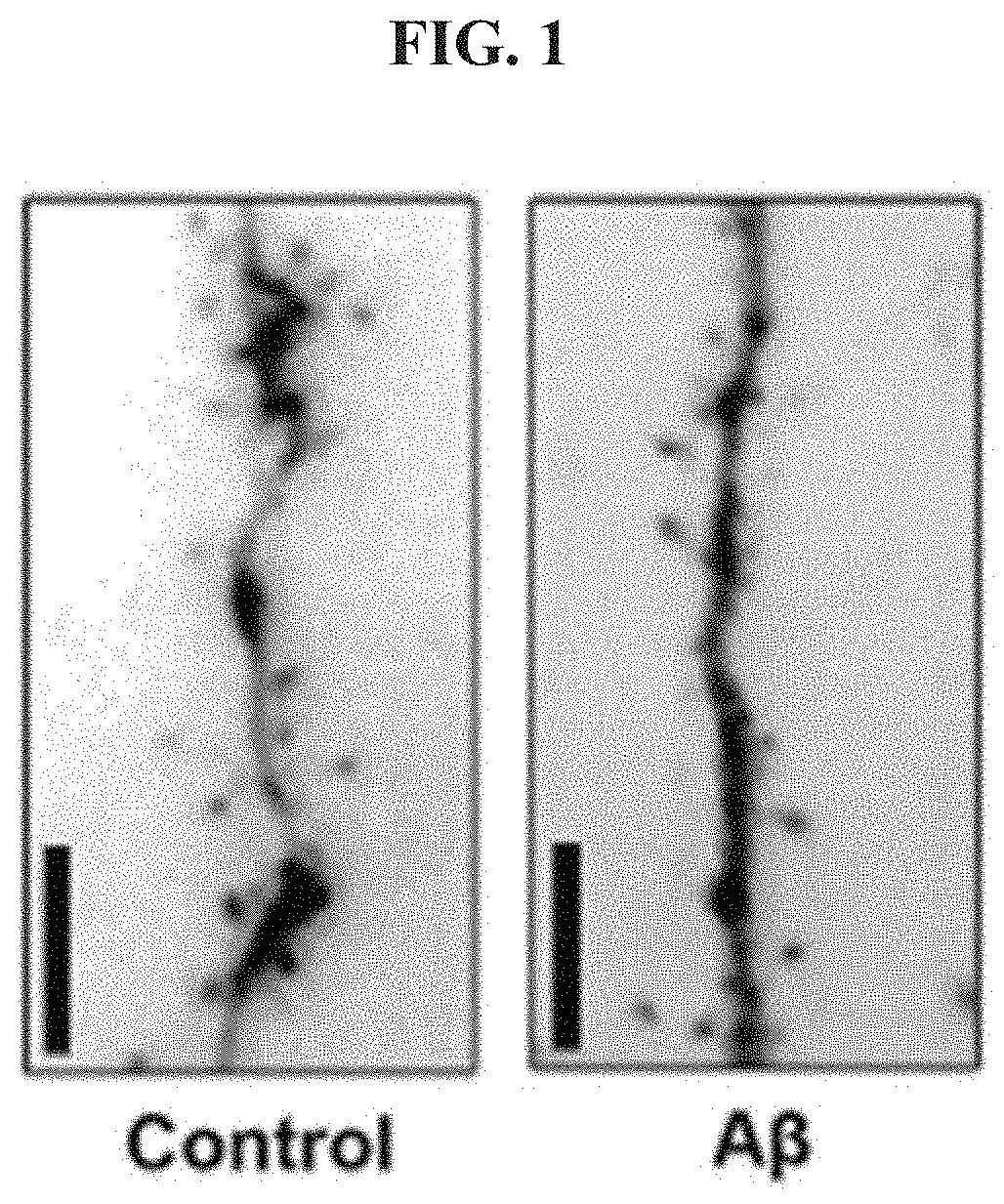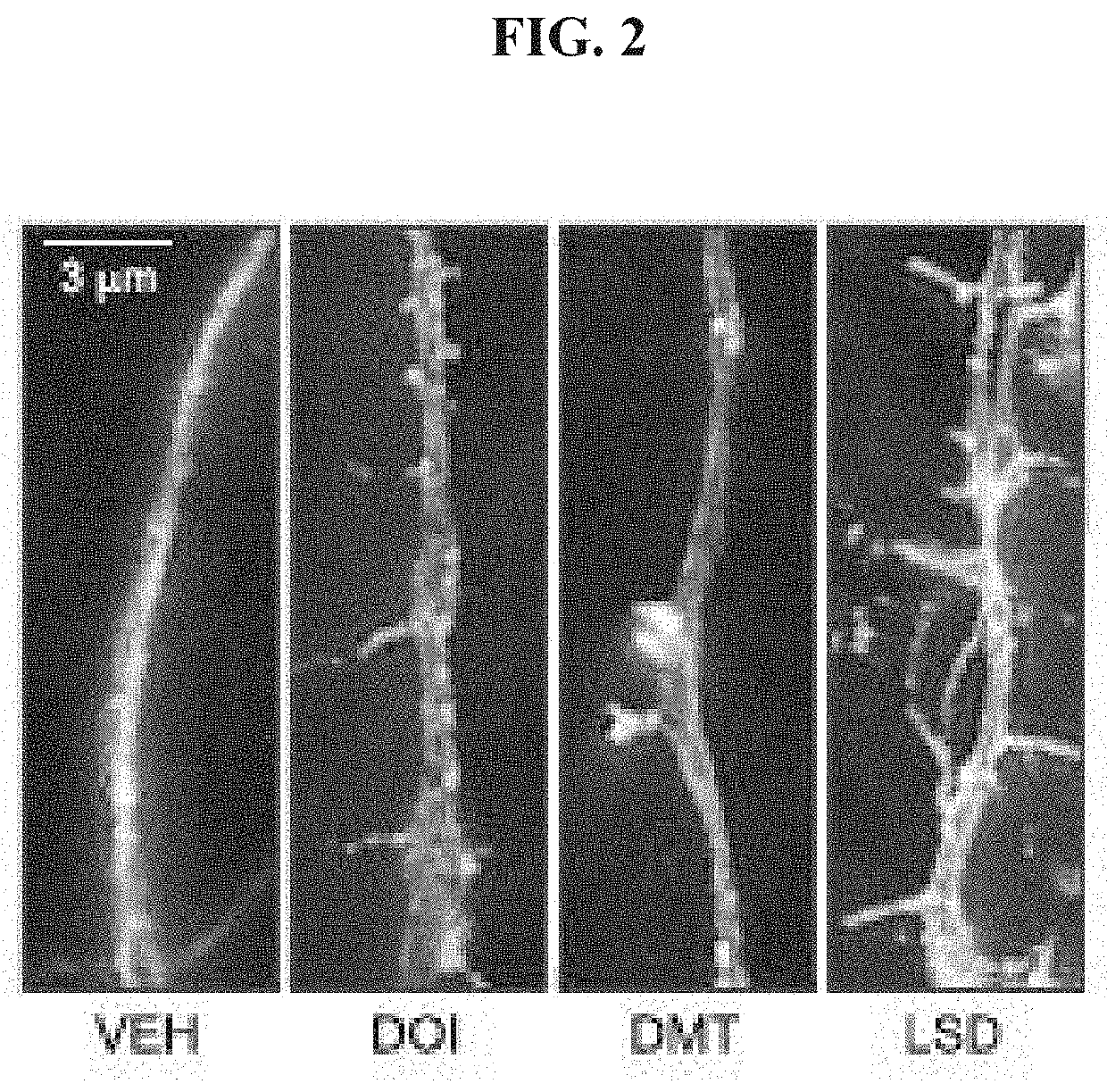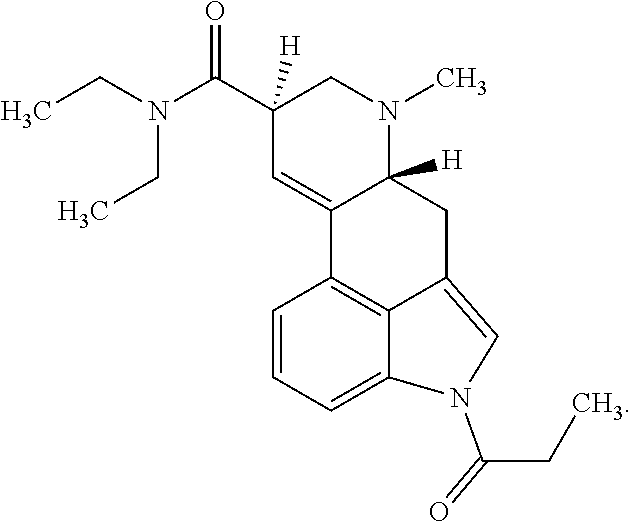Method of Inducing Dendritic and Synaptic Genesis in Neurodegenerative Chronic Diseases
a neurodegenerative chronic disease and dendritic genesis technology, applied in the field of dendritic genesis in neurodegenerative chronic diseases, can solve the problems of large social problems, significant emotional and financial burdens on developed and developing societies, and the current medical infrastructure is taxed
- Summary
- Abstract
- Description
- Claims
- Application Information
AI Technical Summary
Benefits of technology
Problems solved by technology
Method used
Image
Examples
Embodiment Construction
[0022]Referring to FIG. 1, this shows scanning electron microscope (SEM) images of rat neurons the black bar represents 5-micron scale. The control sample shows neurons of healthy rats before exposure to toxic A1342 amyloid proteins. At this resolution one can see copious dendritic structure's, the round dark circles. The resolution is not high enough to visualize synaptic connections. The image labeled A13 is of rat neurons after exposure for 4 days to 250 micro molar concentrations of toxic peptide. As can be seen in the image there is a significant degradation of the dendrites and although not seen the synaptic connections as well. This model emulates what is seen in the human versions of AD disease.
[0023]Autopsy results done by DeKosky et al. (Ann Neurol., 1990, 27(5):457-64) on patients that have died from Alzheimer's disease (AD) disease evidence a significant decrease in synaptic connections in their brains. The DeKosky results are summarized in Table 1 below. This is consist...
PUM
| Property | Measurement | Unit |
|---|---|---|
| Mass | aaaaa | aaaaa |
| Mass | aaaaa | aaaaa |
| Mass | aaaaa | aaaaa |
Abstract
Description
Claims
Application Information
 Login to View More
Login to View More - R&D
- Intellectual Property
- Life Sciences
- Materials
- Tech Scout
- Unparalleled Data Quality
- Higher Quality Content
- 60% Fewer Hallucinations
Browse by: Latest US Patents, China's latest patents, Technical Efficacy Thesaurus, Application Domain, Technology Topic, Popular Technical Reports.
© 2025 PatSnap. All rights reserved.Legal|Privacy policy|Modern Slavery Act Transparency Statement|Sitemap|About US| Contact US: help@patsnap.com



